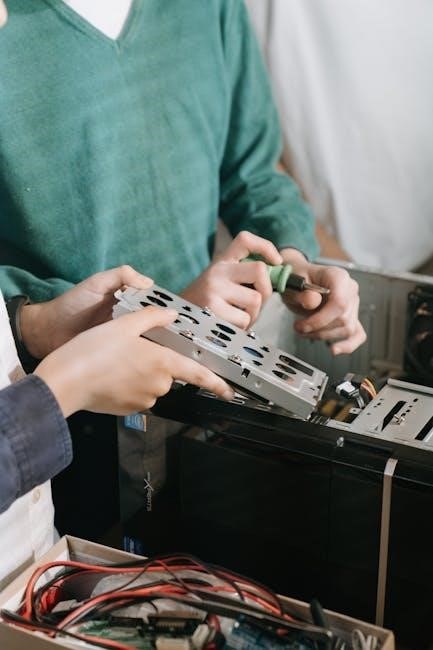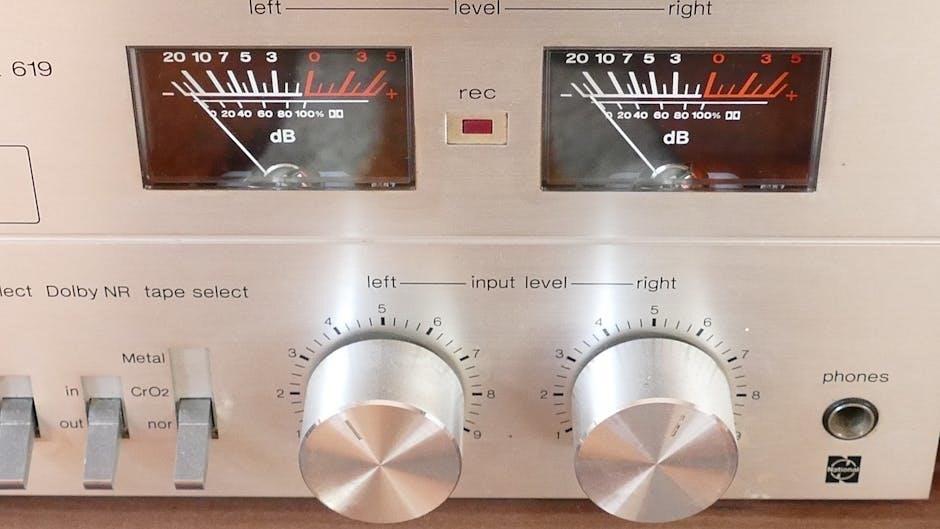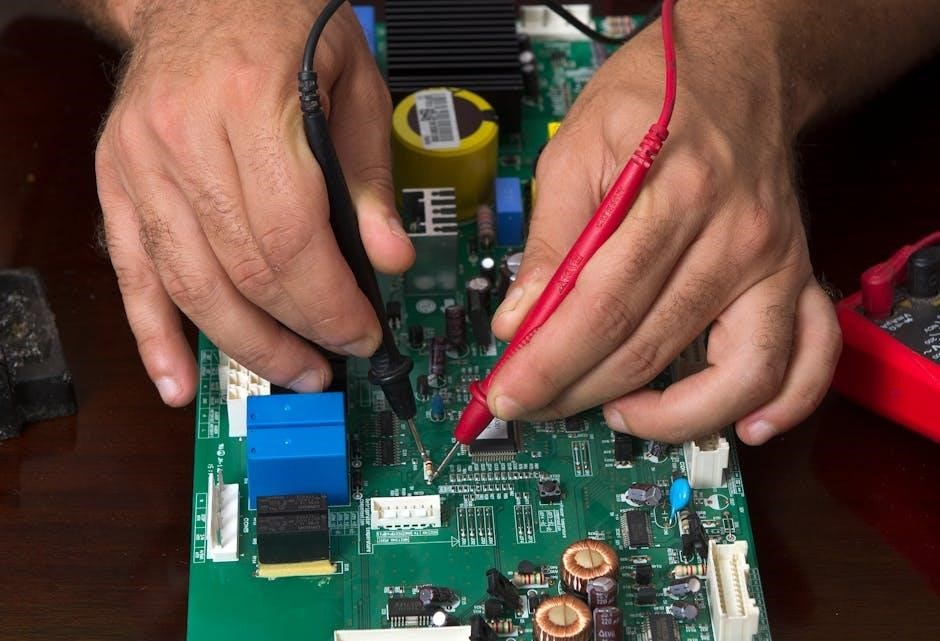
The Lippert leveling system troubleshooting manual provides guidance on resolving issues with the system, using tags like h2 and p for formatting the content effectively and clearly every time.
Understanding the Importance of Troubleshooting
Troubleshooting is a crucial step in maintaining the Lippert leveling system, as it helps identify and resolve issues promptly, minimizing downtime and ensuring optimal performance. The process involves a systematic approach to diagnosing problems, using tools and resources such as the troubleshooting manual and online guides. By understanding the importance of troubleshooting, users can take proactive measures to prevent issues from arising, reducing the risk of costly repairs and ensuring a smooth operation. Effective troubleshooting also enables users to identify potential problems before they become major issues, allowing for timely intervention and maintenance. This proactive approach can help extend the lifespan of the Lippert leveling system, reducing the need for frequent repairs and replacements, and ultimately saving time and resources. Regular troubleshooting can also help improve the overall efficiency and reliability of the system.

Common Issues with Lippert Leveling Systems
Issues with Lippert leveling systems include faulty control panels and malfunctioning jacks causing problems with the system every time.
Control Panel Not Responding
The control panel not responding is a common issue with Lippert leveling systems, and it can be caused by a variety of factors, including a blown fuse or a faulty wiring connection.
To troubleshoot this issue, it is recommended to check the fuse and wiring connections to ensure they are secure and not damaged.
Additionally, it may be helpful to consult the user manual or contact a professional for assistance.
The control panel is an essential component of the Lippert leveling system, and it plays a crucial role in operating the system.
If the control panel is not responding, it can prevent the system from functioning properly, leading to issues with leveling and stabilization.
It is essential to address this issue promptly to ensure the system operates correctly and safely.
By following the troubleshooting steps and seeking professional help when needed, users can resolve the issue and get their Lippert leveling system up and running smoothly.
Leveling Jacks Not Retracting or Extending Properly
The leveling jacks not retracting or extending properly is another common issue with Lippert leveling systems, and it can be caused by a variety of factors, including hydraulic fluid levels or blockages in the system.
To troubleshoot this issue, it is recommended to check the hydraulic fluid levels and ensure they are at the recommended level.
Additionally, it may be helpful to inspect the system for any blockages or damage to the jacks or hoses.
The leveling jacks play a crucial role in stabilizing and leveling the vehicle, and if they are not functioning properly, it can lead to safety issues and damage to the system.
By addressing this issue promptly and following the recommended troubleshooting steps, users can resolve the problem and ensure their Lippert leveling system operates smoothly and safely.
Regular maintenance and inspection of the system can also help prevent this issue from occurring in the future and ensure optimal performance.

Lippert Leveling System Operation
Lippert leveling system operates using hydraulic power and electronic controls for smooth movement and stabilization always using proper tags.
Auto-Leveling System Procedure
The auto-leveling system procedure involves a series of steps to ensure proper leveling of the vehicle.
The LCI LOGO light will go out when the coach is initially leveled, indicating the start of the auto-leveling process;
The system will then go through a series of fine-tuning for leveling, with the ARROW lights indicating which jacks are being activated.
This process is designed to provide a smooth and stable leveling experience, using hydraulic power and electronic controls.
The auto-leveling system is a key component of the Lippert leveling system, and understanding its procedure is essential for proper operation and troubleshooting.
The system is designed to work automatically, with minimal input required from the user.
By following the auto-leveling system procedure, users can ensure that their vehicle is properly leveled and stable, providing a safe and comfortable experience.
The procedure is outlined in the Lippert leveling system manual, and should be consulted for detailed instructions and guidelines.
LCI LOGO Light and ARROW Lights Indication
The LCI LOGO light and ARROW lights play a crucial role in indicating the status of the Lippert leveling system.
The LCI LOGO light will go out when the coach is initially leveled, indicating that the auto-leveling process has started.
The ARROW lights will then indicate which jacks are being activated, providing a visual cue for the user.
The lights are an essential part of the system’s user interface, providing real-time feedback on the leveling process.
By monitoring the LCI LOGO light and ARROW lights, users can quickly identify any issues or problems with the system.
The lights are designed to be easy to read and understand, making it simple for users to navigate the leveling process.
The indication provided by the lights is a key component of the Lippert leveling system’s troubleshooting procedure, allowing users to quickly identify and resolve any issues that may arise.

Troubleshooting Steps for Lippert Leveling System
Troubleshooting involves checking fluid levels and electrical connections to identify issues with the system quickly and effectively every time using tags.
Checking Fluid Level in Reservoir
The process of checking the fluid level in the reservoir is crucial for maintaining the Lippert leveling system. It is essential to ensure that the reservoir is full to within 1/2 of the top. The fluid level should be checked when all jacks are retracted, and the system is in a neutral state. If the fluid level is low, it may be necessary to add fluid to the reservoir; The type of fluid used in the Lippert leveling system is typically hydraulic fluid, and it is essential to use the correct type of fluid to avoid damaging the system. The reservoir should be checked regularly to prevent any issues with the system. By following these steps, you can ensure that the Lippert leveling system is functioning correctly and efficiently. Regular checks can help prevent problems and reduce the need for costly repairs.
Zeroing Procedure and Consultation of Manual
The zeroing procedure is an essential step in troubleshooting the Lippert leveling system. It is recommended to consult the LCI electronic leveling operation manual or TI-016 for the zeroing procedure. The manual provides a step-by-step guide on how to zero the system, which helps to reset the system and resolve any issues. The zeroing procedure involves a series of steps that must be followed carefully to ensure that the system is properly calibrated. It is essential to consult the manual to understand the specific requirements for the zeroing procedure. By following the instructions in the manual, you can ensure that the system is properly zeroed and functioning correctly. The manual is a valuable resource for troubleshooting and maintaining the Lippert leveling system. Regular consultation of the manual can help to prevent issues and ensure that the system is operating efficiently. Proper zeroing is crucial for system accuracy.

Additional Resources for Troubleshooting
Electronic Leveling Operation Manual and TI-016
The electronic leveling operation manual is a comprehensive guide that provides detailed information on the operation and maintenance of the Lippert leveling system, including troubleshooting procedures and repair guidelines.
The TI-016 manual is a supplementary resource that offers additional guidance on specific aspects of the system, such as calibration and adjustment procedures.
These resources are essential for anyone who needs to troubleshoot or repair their Lippert leveling system, and can be accessed online or through the manufacturer’s website.
By consulting these manuals, users can gain a better understanding of their system and how to resolve common issues, reducing downtime and improving overall performance.
Files for Out of Warranty 6 Point Hydraulic Leveling System
For owners of the 6 Point Hydraulic Leveling System who are no longer under warranty, there are several files available that can provide assistance with troubleshooting and repair.
These files include detailed diagrams and instructions for common repairs, as well as guidelines for maintenance and upkeep.
By accessing these files, owners can gain a better understanding of their system and how to resolve issues that may arise, reducing the need for costly repairs and improving overall performance.
The files are available online and can be downloaded in a variety of formats, making it easy to access and use the information. Overall, the files for out of warranty 6 Point Hydraulic Leveling System are a valuable resource for owners who want to take control of their system’s maintenance and repair.